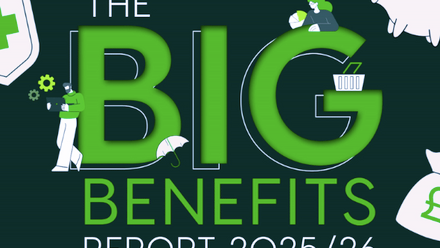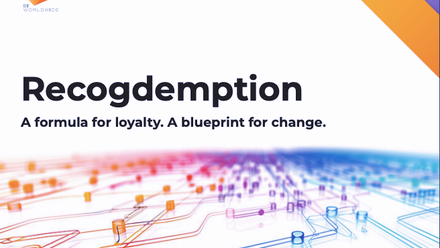How to transform the employee value proposition and put reward and benefits at its heart
The way employers and employees view the employee value proposition is changing.
In the past, the employee value proposition (EVP) was centred on what employers could offer and what they would expect from employees in return. It was very much a transactional proposition. While the fundamental elements of the ‘give’ and ‘get’ are still necessary to deliver the EVP, we’re moving towards a more experimental and differentiated experience, as employee expectations change. How employees experience work is now equally (or more important) as what they gain from the relationship between employee and employer.
It’s also becoming an increasing priority for organisations. The pandemic acted as a turning point for employers, with 92% of employers saying that enhancing the employee experience will be a priority for them in the next three years, compared to only 52% saying the same prior to 2020.
The shift towards mindsets, behaviours and tangible enablers
Many organisations are increasingly aware of the relationship between strong employee experience and strong financial company performance. Our high performance employee experience (HPEX) research continues to find that companies with strong employee experience superior financial returns: notably three times the revenue growth and eleven times the profit margin over the course of three years.
As the approach to the employee value proposition adapts, we’re recommending a greater emphasis on building a framework based on mindsets that drive behaviours to create experiences that shape an organisation’s culture.
These are underpinned by EVP enablers; tangible programs, policies, processes and practices that need to change or be introduced to enable employees to embrace the EVP mindsets and behaviours. A critical component of these enablers is total rewards.
Total rewards remain a critical component of EX
Our HPEX research shows that pay and recognition are more important than ever before, and within this pay transparency.
In fact, in 2023, we found that pay and recognition were the biggest drivers of high performing employee experience, followed by career development and wellbeing. This marks a shift from 2019, when the biggest drivers were around career, skill development and security. The changing economic landscape, cost of living crisis and new generations joining the workforce with different expectations around pay transparency may be some driving factors to this shift.
Bringing rewards and benefits to life through EVP
Benefits and rewards are at the centre of the employee value proposition, but it’s more important than ever they align with employee expectations, needs and wants and in a way that resonates with their values, as well as the values of the organisation. It’s also important that organisations consider the ways employees experience their benefits and rewards, as well as what benefits and rewards they offer.
Transparency is key. It’s imperative that companies align their approach to pay transparency in light of regulatory changes (such as the EU Pay Directive) to their broader values and EVP. Growing legislation around pay transparency presents a great opportunity to meet changing employee expectations and improve employees’ experience around pay conversations with their managers and leaders, from closed and taboo to transparent and open.
Communication shouldn’t be underestimated. Offering career progression and development opportunities is one thing but equally, if not more importantly, is supporting employees navigate the options they have available to them. Through leveraging digital tools, organisations can enable their people to access the opportunities available to them, through a personalised, digital experience.
Playing a key role in supporting development
Finally, all this is underpinned by a focus on wellbeing. Understanding the specific wellbeing needs of employees and being able to tailor them will help shape how reward and benefit programmes can support colleagues on a more personal basis. It’s also about creating a culture where employees feel safe and empowered to seek out and utilise these benefits when they need them. Leaders play a key role in developing this culture, by demonstrating care for all aspects of their employees’ wellbeing (physical, financial, social and emotional).
Total Rewards will always remain an important part of the employee value proposition. It remains at the heart of the EVP and continues to be a key driver in delivering high performing employee experiences. But to truly transform things, the emphasis needs to be on how rewards are delivered, how employee experiences them. Culture, mindsets and behaviours are key to engaging employees in a more authentic way.
Supplied by REBA Associate Member, WTW
WTW is a leading global advisory, broking and solutions company.








